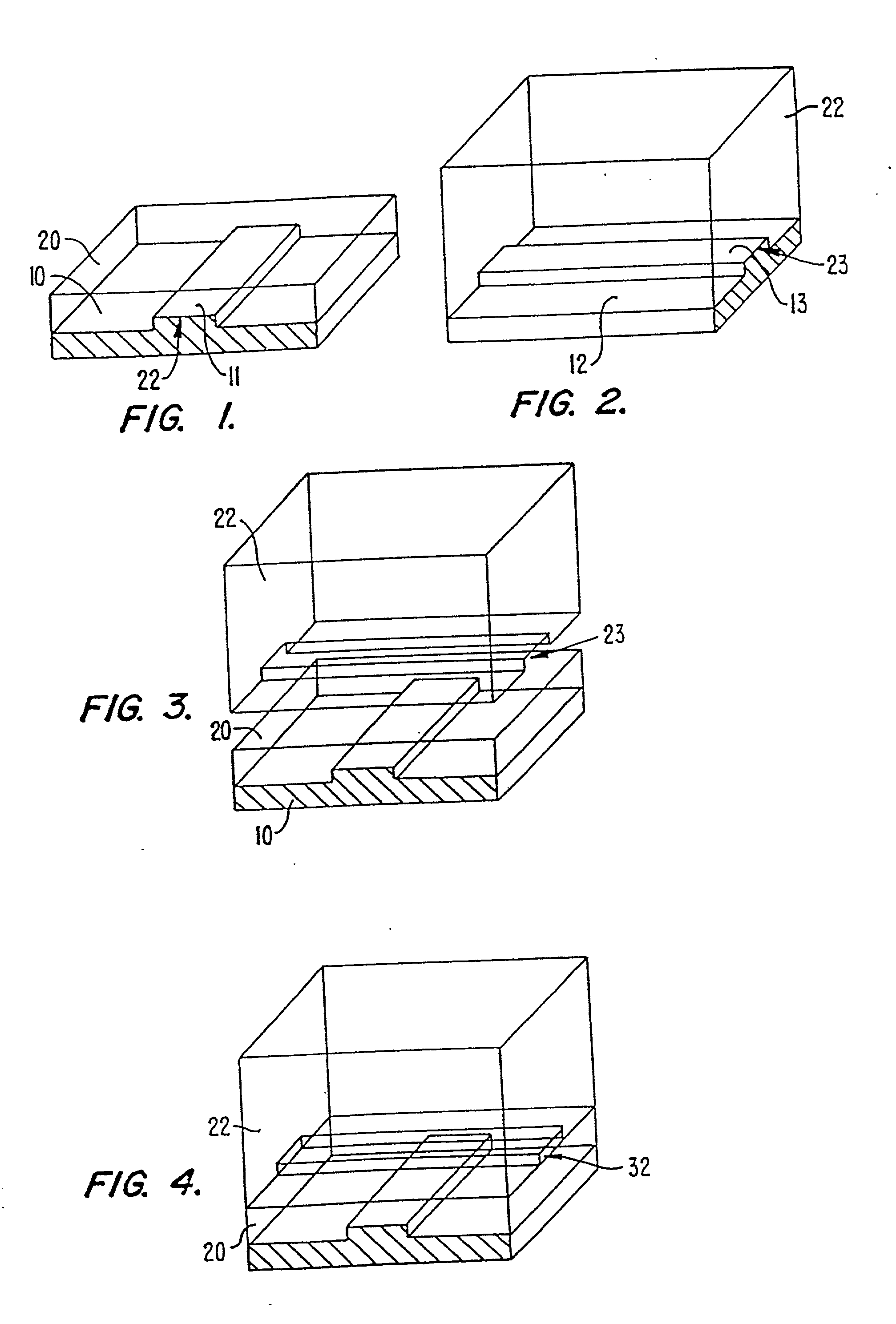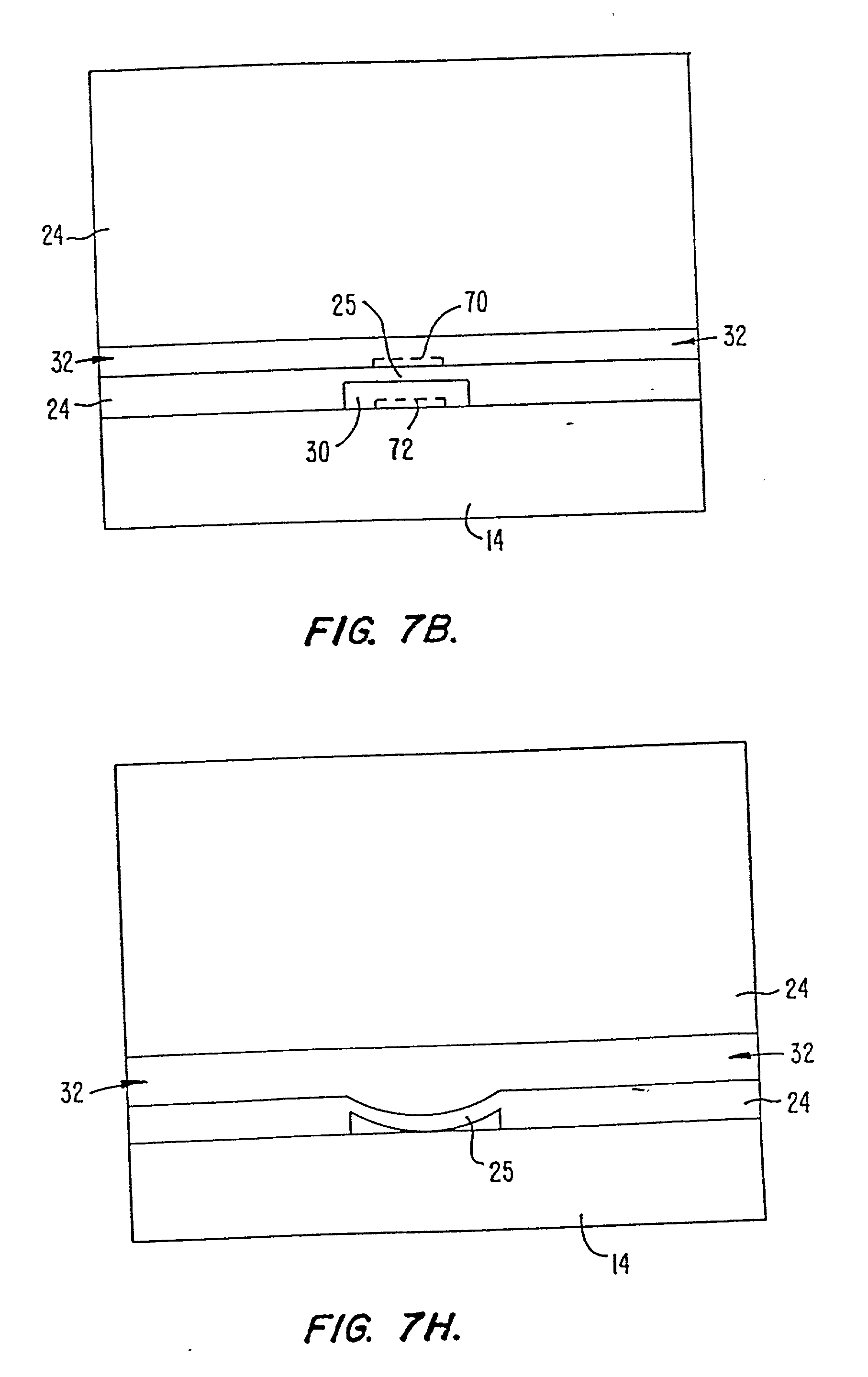Microfluidic devices and methods of use
a microfluidic device and microfluidic technology, applied in the direction of fluid speed measurement, electrolysis, isotope separation, etc., can solve the problems of inability to work with conventional sorting procedures, inability to achieve gel electrophoresis, and relatively long gel electrophoresis procedures, so as to reduce the amplitude of oscillation pressure and lessen the oscillation of velocity of the entity
- Summary
- Abstract
- Description
- Claims
- Application Information
AI Technical Summary
Benefits of technology
Problems solved by technology
Method used
Image
Examples
Embodiment Construction
[0063] I. Microfabrication Overview
[0064] The following discussion relates to formation of microfabricated fluidic devices utilizing elastomer materials, as described generally in U.S. patent application Ser. Nos. 09 / 826,585 filed Apr. 6, 2001, 09 / 724,784 filed Nov. 28, 2000, and 09 / 605,520, filed Jun. 27, 2000. These patent applications are hereby incorporated by reference.
[0065] 1. Methods of Fabricating
[0066] Exemplary methods of fabricating the present invention are provided herein. It is to be understood that the present invention is not limited to fabrication by one or the other of these methods. Rather, other suitable methods of fabricating the present microstructures, including modifying the present methods, are also contemplated.
[0067] FIGS. 1 to 7B illustrate sequential steps of a first preferred method of fabricating the present microstructure, (which may be used as a pump or valve). FIGS. 8 to 18 illustrate sequential steps of a second preferred method of fabricating the...
PUM
| Property | Measurement | Unit |
|---|---|---|
| Pressure | aaaaa | aaaaa |
| Flow rate | aaaaa | aaaaa |
| Flexibility | aaaaa | aaaaa |
Abstract
Description
Claims
Application Information
 Login to View More
Login to View More - R&D
- Intellectual Property
- Life Sciences
- Materials
- Tech Scout
- Unparalleled Data Quality
- Higher Quality Content
- 60% Fewer Hallucinations
Browse by: Latest US Patents, China's latest patents, Technical Efficacy Thesaurus, Application Domain, Technology Topic, Popular Technical Reports.
© 2025 PatSnap. All rights reserved.Legal|Privacy policy|Modern Slavery Act Transparency Statement|Sitemap|About US| Contact US: help@patsnap.com



